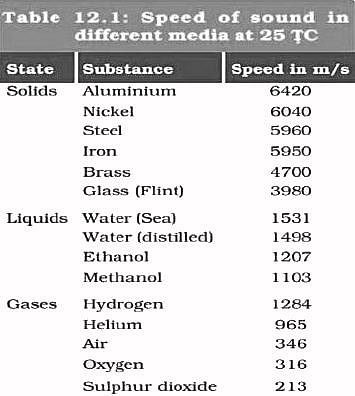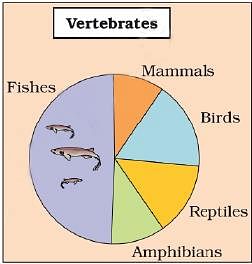UPSC CSE Complete Practice Test -14 - UPSC MCQ
30 Questions MCQ Test Mock Test for UPSC Prelims 2025 - UPSC CSE Complete Practice Test -14
With reference to the Sayyid dynasty of Medieval India, consider the following statements:
- It was founded by Khizr Khan.
- It was succeeded by the Khalji dynasty.
Which of the statements given above are correct?
A record must satisfy which of the following criteria to count as a Guinness World Record?
- It should be verifiable.
- It cannot be something so unique that only one person can do it.
- It should be objectively measurable.
- It should bestandardisablewith a possibility to create a set of parameters and conditions.
How many of the above statements is/are correct?
| 1 Crore+ students have signed up on EduRev. Have you? Download the App |
The places Kapilvastu and Lumbini are located in
Consider the following statements regarding direct seeding of rice (DSR) versus conventional transplanting method.
- In direct seeding of rice (DSR), Paddy is sown directly in the field without any nursery preparation or flooding.
- In transplanting, the flooded fields basically deny oxygen to the weed seeds in the soil, preventing their germination.
- In DSR, water is replaced with chemical herbicides.
- DSR is effective against weeds and saves water compared to transplanting.
How many of the above statements are correct?
Consider the following statements regarding bots.
- A bot is a software application that is programmed to do certain tasks over the Internet.
- Bots often imitate or replace a human user’s behaviour.
- Bots can be malicious as well, that can break into user accounts, scan the web for contact information for sending spam.
How many of the above statements are correct?
Consider the following statements regarding cumin seeds, commonly known as jeera.
- Jeera is an extremely weather-sensitive crop, which requires a moderately cool and dry climate.
- India accounts for less than 10% of the world’s production of this seed spice.
- In India, it is mainly grown in the northern parts of Gujarat and adjoining districts of western Rajasthan.
How many of the above statements are correct?
With reference to the ancient Indian history, consider the following statements about ‘Kutagarashala’:
- A place where the travelling mendicants halted.
- A place where discussions were held on several philosophies.
- A place where the monastic rules of Buddhism were recited on a full-moon day.
How many of the above statements is/are correct?
Isotopes have the same atomic number but different atomic masses. Which among the following are the uses of radioactive isotopes?
- Treatment of cancer
- Fuel in nuclear reactors
- Treatment of goitre
Select the correct answer using the code given below.
Which of the following statements is/are incorrect?
- When aggregate demand exceeds aggregate supply, it can result in infl ationary pressures.
- If aggregate supply surpasses aggregate demand, it can lead to unemployment and deflationary pressures.
Select the correct answer using the codes given below.
Consider the following statements:
1. The National Perspective Plan for Women (1988-2000) recommended the constitution of a Commission for Women in India.
2. The National commission for Women (NCW) deals with the issues of NRI martial disputes.
3. Suo Motu cognizance can be taken for information received by the NCW related to violence against women.
4. Legal Cell of NCW reviews the constitutional and legal safeguards provided to the Women.
How many of the statements given above are correct?
Consider the following pairs:
Wildlife Sanctuary : State
- Mhadei Wildlife Sanctuary : Goa
- Pakke Wildlife Sanctuary : Assam
- Hastinapur Sanctuary : Haryana
How many of the pairs given above are correct?
Consider the following statements regarding Adi Shankaracharya and Sri Ramanujacharya.
- Adi Shankaracharya and Sri Ramanujacharya are contemporaries.
- While Adi Shankaracharya propounded Vishishtadvaita Vedanta, Sri Ramanujacharya propounded Advaita Vedanta.
- Both argued that the ultimate reality is Brahman.
How many of the above statements is/are correct?
Which of the following are types of bioplastics?
- Poly hydroxy alkanoate
- Polylactic acid
- Polyethylene terephthalate
Select the correct answer using the code given below.
Consider the following statements regarding the speed of sound:
- The speed of sound decreases as it moves from solid to liquid medium.
- As temperature increases, the speed of sound increases.
- At any given temperature, the speed of sound in oxygen is greater than the speed of sound in an air medium.
Which of the statements given above is/are correct?
Consider the following statements regarding Snow leopard
- International Snow Leopard Day came into being with the adoption of the Bishkek Declaration.
- It is the National Heritage Animal of Pakistan and Afghanistan.
- Hemis National Park is the Snow Leopard capital of the world.
How many of the above statements is/are correct?
Consider the following statements regarding ‘electoral bonds’:
Statement I: The Electoral Bond Scheme allows Indian citizens or entities incorporated or established in India, as well as outside India, to purchase Electoral Bonds.
Statement II: A person being an individual can buy Electoral Bonds, either singly or jointly with other individuals.
Which one of the following is correct in respect of the above statements?
Consider the following statements:
- The Pandrethan temple of Kashmir is constructed on a plinth built in the middle of a tank.
- During the Karkota period, most of the Buddhist and Hindu temples were destroyed in Kashmir.
Which of the statements given above is/are correct?
Consider the following pairs:

Which of the pairs given above is/are correctly matched?
Consider the following statements:
- The G4 nations primarily focus on economic cooperation and trade agreements within the Asia-Pacific region.
- The G4 nations are exclusively European countries seeking closer integration within the European Union.
- The G4 nations emerged as a coalition to combat climate change and promote sustainable development globally.
How many of the above statements about the G4 nations are true?
Consider the following pairs:
Types of Eclipse : Reason
- Annular Eclipse: The moon passes between the Earth and the Sun but is not perfectly aligned
- Partial Eclipse : Only a small ring-like sliver of light is seen from the sun's disc
- Hybrid Eclipse : Caused by the curvature of the earth's surface
Which of the pairs given above is/are correctly matched?
Consider the following statements:
- Statement-I: The black soil retains the moisture for a very long time.
- Statement-II: The black soil contain high amount of clay minerals.
Which one of the following is correct with respect to the above statements?
Consider the following pairs in the context of vertebrates:

Select the correct option using the code given below.

Arrange the following regions into the decreasing order of the floral endemism:
- Eastern Himalaya and north-eastern region
- North-western Himalaya
- Andaman & Nicobar Islands
- Peninsular India including Western and Eastern Ghats
Select the correct answer using the code given below:
Consider the following statements with reference to Sovereign Gold Bonds:
- They are government securities denominated in grams of gold.
- A minor cannot invest in these bonds.
- An individual investor can buy only 4 kg worth of gold every year.
How many of the statements given above are correct?
With reference to the reserve tranche, consider the following statements:
- The reserve tranche is an emergency account that IMF members can access without agreeing to conditions or paying a service fee.
- The reserve tranches that countries hold with the IMF are considered their facilities of last resort.
Which of the statements given above are correct?
“Sorbitol” has applications in which of the following?
- used as a sugar substitute in confectionaries
- used as a natural anti-diarrheal
- used in the preparation of synthetic Vitamin-C
- used as an ingredient in toothpaste
Select the correct answer using the code given below.
With reference to the temple architecture of the hills, consider the following statements:
- They are famous for their unique tradition of wooden buildings with pitched roofs.
- Kashmir’s temple architecture was largely influenced by the Gandhara style.
Which of the statements given above is/are correct?
Consider the following statements:
Statement-I: The concept of equality before the law is embodied in Article 14 of the Indian Constitution.
Statement-II: The State shall not deny to any person equality before the law or the equal protection of the laws within the territory of India.
Which one of the following is correct in respect of the above statements?
With reference to the Indian economy, which of the following are correct with respect to Additional Tier 1 (AT1) Bonds?
- If a Bank makes huge losses, AT1 Bonds liability may be written off but cannot be converted into shares.
- They do not have a maturity period.
- Banks issuing AT1 bonds have no obligation to pay back Principal amount to investors.
- They cannot be traded in secondary markets.
Select the correct answer using the codes given below:
Which of the following are the terms and conditions of the Subsidiary Alliance?
- The British would be responsible for protecting their ally from external and internal threats.
- In the territory of the ally, a British armed contingent would be stationed.
- The ally could enter into agreements with other rulers only with the permission of the British.
Select the correct answer using the code given below.
|
16 videos|4 docs|70 tests
|
|
16 videos|4 docs|70 tests
|
















